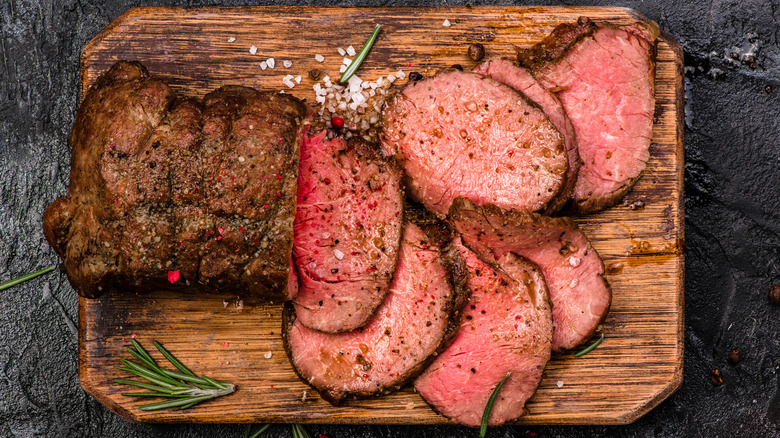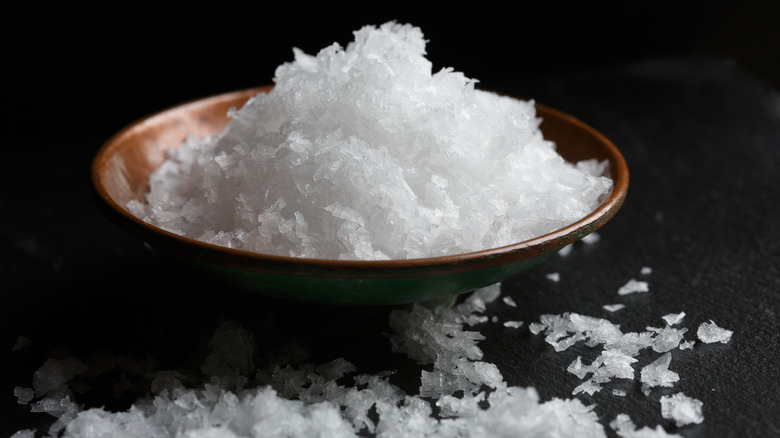For An Extra Crispy Crust On Your Next Roast, Sprinkle It With Sea Salt
A big upside to cooking meat with high heat (as opposed to, say, boiling) is the delectable texture of a good sear or crispy crust. There are a few factors involved in achieving this result; the first (duh) is heat, and lots of it — either from a grill's open flame or a rockin' hot oven. The second is salt. Salting the exterior of your preferred cut of meat accomplishes several things, which we'll get into. But the takeaway is this: if you want an extra crispy crust on your next pork or beef roast, sprinkle it with salt. We recommend using sea salt because it's more complex and flavorful.
So, how do salt, meat, and heat provide crispy? By a very complex chemical process called the Maillard Reaction, which requires heat. Salt removes the moisture from the exterior of your roast, allowing its surface temperature to rise enough for the Maillard Reaction to kick off, transforming the meat's proteins and sugars into a browned, roasty-crisp wonderland. Meanwhile, the salt will also be doing important work inside the roast: the drawn-out moisture will be reabsorbed as brine, tenderizing the meat inside. This is all great news. But why are we recommending sea salt? What's so special about it?
The ocean is a flavor factory
Can you use table salt and still achieve a crispy crust on your roast? Absolutely. Both table salt and sea salt have the same amount of sodium, which is what paves the way for our beloved Maillard Reaction. Table salt is mined from inland deposits, after which it undergoes a process to remove trace minerals, and it's then treated with iodine to promote thyroid health. Sea salt occurs naturally — it is simply evaporated seawater, and so is chock-a-block with minerals and trace elements. Both salts have the same nutritional value, so does it really matter? Oh yes.
The minerals in sea salt provide flavor and color. Part of this flavor is, well, saltiness, which is enhanced by sea salt's naturally-occurring mineral content. So, by using sea salt, it's possible to reduce your sodium intake without feeling like you're missing out. But there are many more elements and minerals in sea salt, among them potassium, magnesium, zinc, and calcium. We're big fans of Maldon Salt's pyramidal crystals, but you've got many options: Sel Gris, Dead Sea, Fleur de Sel, Irish Mineral, and Red Alaea. So, go forth and get crusty. In a good way.

